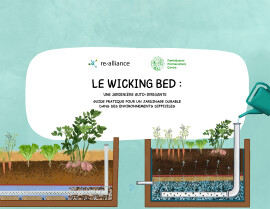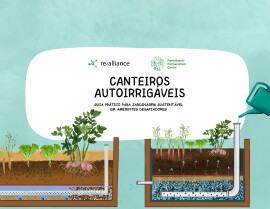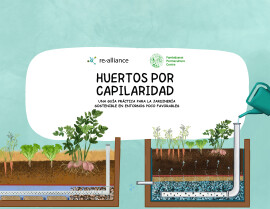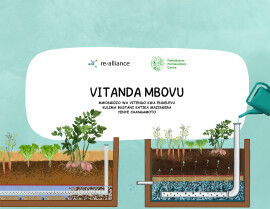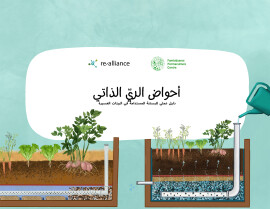
Farmers' Choice
Evaluating an approach to agricultural technology adoption in Tanzania
Helene Bie Lilleør, Ulrik Lund-Sørensen
Food security is an urgent international priority. However, agricultural extension methods that relied on imposing centrally-developed technological solutions have been ineffective, since small farmers in developing countries often cultivate marginal lands, working under constraints for which these solutions were not designed. Since 2006, a flexible agricultural extension approach has been implemented in Northern Tanzania, inspired by the Farmer Field School approach, and offering farmers a ‘basket of technology options’ from which farmers can pick and choose what serves their needs and resources best. The focus is on extending improved low-cost farming techniques adaptable to local conditions in a pragmatic and flexible process. The interventions are locally known as ‘RIPAT’,have received financial and technical support from the Rockwool Foundation. Farmers’ Choice outlines the RIPAT intervention, and examines how effective it has been.This evaluation should be read by all those interested in improving the food security and incomes of poor farmers in the Global South.
Published: 2012
Pages: 168
eBook: 9781780447742
Paperback: 9781853397752
Hardback: 9781853397745
| Prelims (Figures, tables, boxes and photo credits, About the authors, Preface, MAP of the RIPAT project areas) | |||
|---|---|---|---|
| 1. Introduction | |||
| Helene Bie Lilleør and Ulrik Lund-Sørensen | |||
| PART ONE: RIPAT IMPLEMENTATION AND EVALUATION DESIGN | |||
| 2. Presentation of RIPAT – Core Components and project implementation | |||
| Catherine W. Maguzu, Dominick Ringo and Jens Vesterager | |||
| 3. Evaluation methods | |||
| Steffen Jöhncke and Ulrik Lund-Sørensen | |||
| PART TWO: EVALUATION STUDIES | |||
| 4. The Context for RIPAT taking regional history and development policy into account in the interpretation of project processes and success | |||
| Quentin Gausset, Steffen Jöhncke, Eva Kaas Pedersen and Michael Whyte | |||
| 5. The impact of RIPAT on Food Security and Poverty | |||
| Anna Folke Larsen and Helene Bie Lilleør | |||
| 6. Evaluation of the RIPAT Concept | |||
| Charles Aben, Deborah Duveskog and Esbern Friis Hansen | |||
| 7. Household Dynamics and Gender Politics: Female Farmers in RIPAT 1 | |||
| Hanne Mogensen and Eva Kaas Pedersen | |||
| 8. The RIPAT groups | |||
| Helene Bie Lilleør and Eva Kaas Pedersen | |||
| 9. Local adoption of social and agricultural technologies | |||
| Quentin Gausset | |||
| 10. Social constraints on the adoption of improved bananas in Arumeru District | |||
| Quentin Gausset and Anna Folke Larsen | |||
| 11. RIPAT, RECODA and Government Institutions | |||
| Charles Aben, Deborah Duveskog and Esbern Friis Hansen | |||
| 12. Summary and concluding remarks | |||
| Helene Bie Lilleør and Ulrik Lund-Sørensen | |||
| Back Matter (Glossary, Annexes, References) |
Helene Bie Lilleør Helene Bie Lilleør is the Head of Evaluation, Rockwool Foundation Research Unit and has years of experience from work in developing countries, including Tanzania.
Ulrik Lund-Sørensen Ulrik Lund-Sørensen is the Evaluation Coordinator at Rockwool Foundation Research Unit and has years of experience from work in developing countries, including Tanzania.
Democratic Rural Organizations
A practitioner’s perspective
Pors, Kristine Kaaber
Due, Kristina
Samuelsen, Peter Bluem
Ringo, Dominick
Kanathila, Shivaram
Rasmussen, Jesper Juel
Olsen, Mette
Skrubbeltrang, Jørgen
2017
https://doi.org/10.4324/9781315473659-16 [Citations: 0]Agricultural Law
Access to Land and Security of Tenure in the Resolutions of the United Nations General Assembly
Brunori, Margherita
2017
https://doi.org/10.1007/978-3-319-64756-2_13 [Citations: 2]
